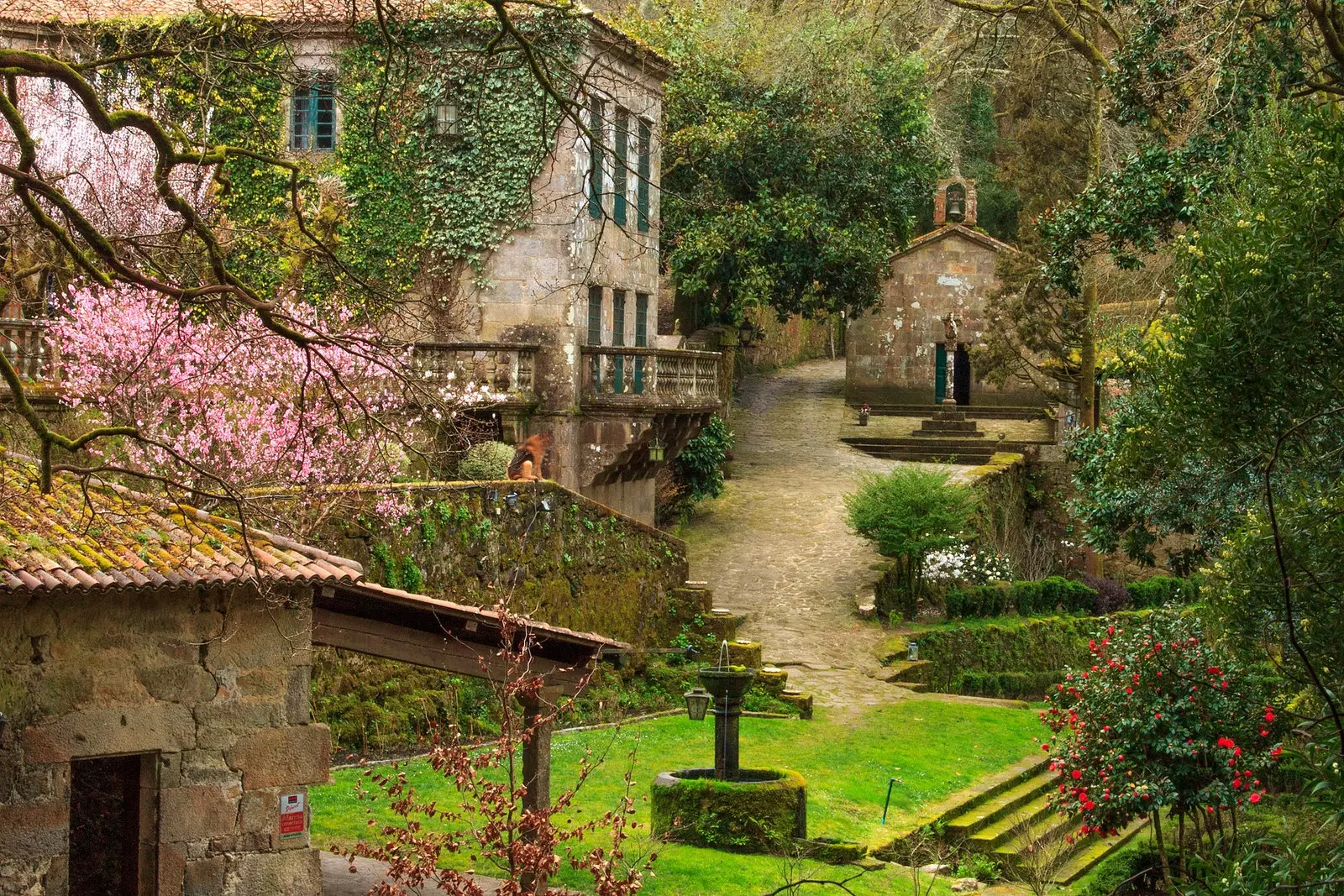
The bucolic Pazo do Faramello
"Everywhere covers the mantle of politics selfish and bastard interests, apostasy and vileness." This was told by the great Emilia Pardo Bazan , who rubbed shoulders with the best of all Europe, when she described stately life in Los Pazos de Ulloa, in the 19th century. It was between those stone walls where everything happened.
In the ** Galicia ** of that time, if you met someone and they told you that they lived in a country house, two things could happen. Either he was lying to you or he was sweating bills. Because the pazo, which comes from the Latin palatium -there you get an idea-, it was synonymous with riches and luxury . In other words, a case.
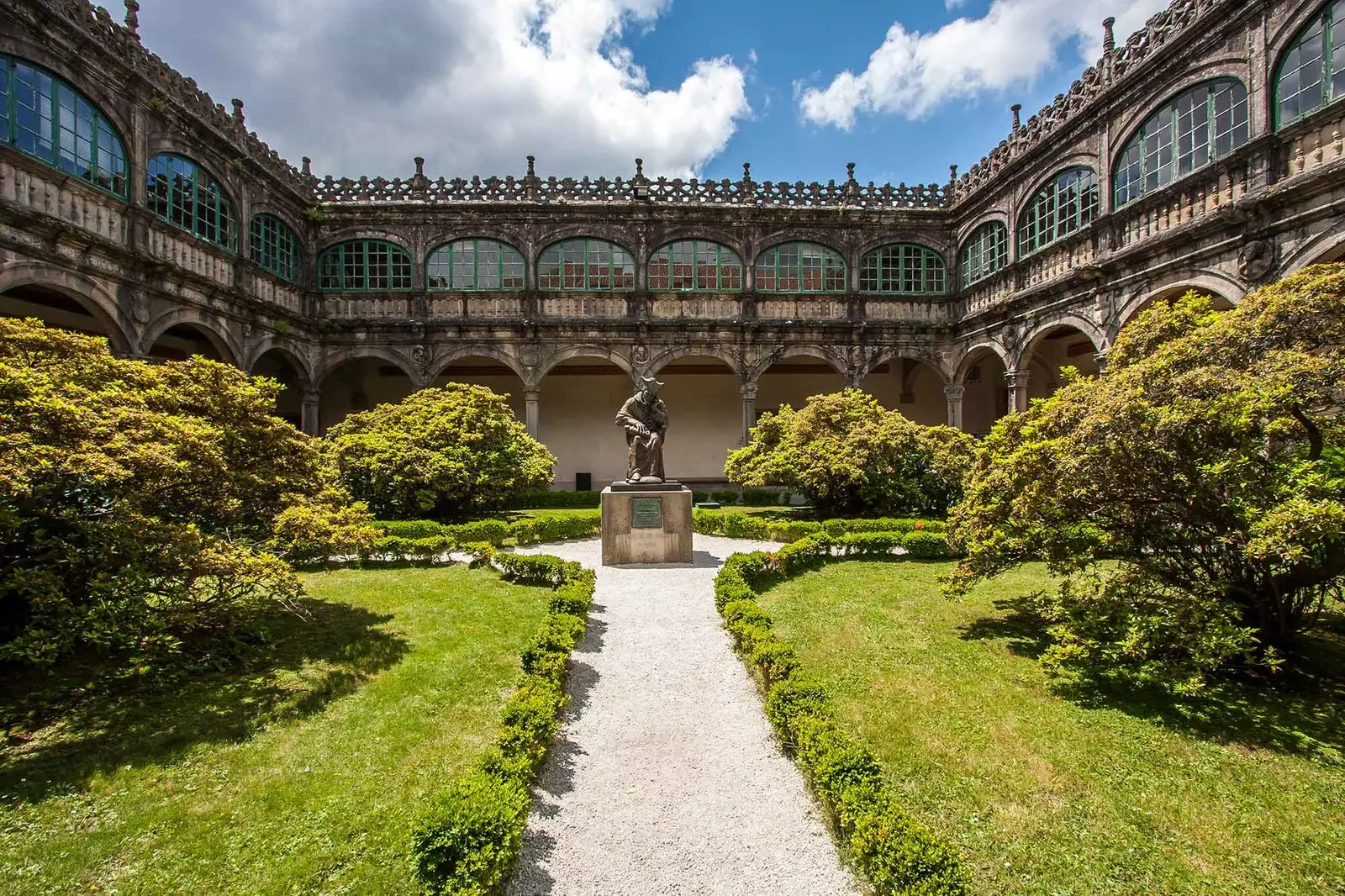
Pazo de Fonseca, Santiago de Compostela
Only the great personalities lived in them. Like the great Emilia, who lived in one of them and ended up describing the sordid and vile life of these elites in her mythical work. Refuge of lords and owners of everything, they had a lot of social relevance in later centuries. Today, many of them can be visited.
There are even converted into luxury hotels . And being able to get under the sheets of a hardwood bed, between stone walls, and dream like a marquis. Or pass the hangover after having fixed the world, who knows.
They were born as one fortified house and some of them still have defense parts , like the crenellated towers or loopholes -which are those fine slots that are in the towers and exterior walls and were used to throw things that were pupa-.
Depending on the climate and geographical area , the manor was adapted. Pazos on the coast didn't have to worry as much about watching AccuWeather on their mobile, while those inside suffered from the octopus.
But usually almost everyone has two floors and attic . Oriented to the south and east, which is where the sun shines the most, with glass galleries to protect from the rain and, incidentally, help the interior to warm up better.
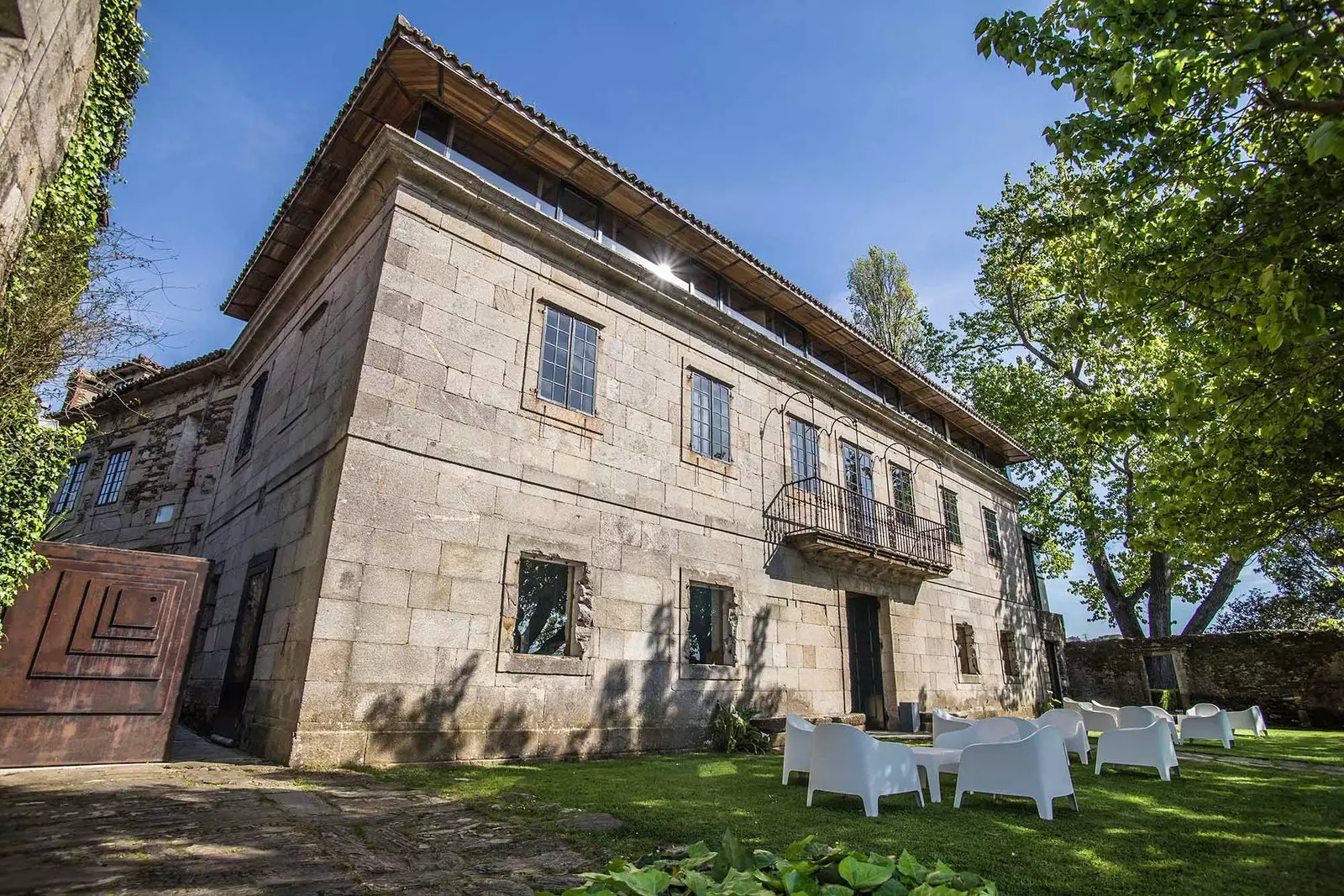
Pazo da Merced, A Coruna
Here is a small selection of the hundreds of them that are cataloged:
Pazo da Merced **(A Coruna) **
It was a tanning factory in the 18th century, then a monastery in the 19th century and later, in the 20th century, it was Francisco Cebreiro's house , a well-known doctor who was called the doctor of the poor For stories other than: it is said that there are still a secret underwater passageway that connects with the Monastery of San Martiño de Xubia.
Pazo of Santa Cruz de Rivadulla **(A Coruna) **
If your thing is to get lost in an enchanted forest, this is your place. This pazo from A Coruña has even a river with a waterfall, a passageway all flanked by olive trees and a historic table where it is said that Gaspar de Jovellanos signed the Memory in Defense of the Central Board on May 2, 1811.
He was trying to get back to his Gijon natal but it was taken by the French so it ended up in the Galician town of Muros.
According to the story, due to a throat condition he asked the manor to send him donkey milk to alleviate it, but when the poor animal arrived it was already dry, so he ended up moving until this enclave with which he ended up falling in love.
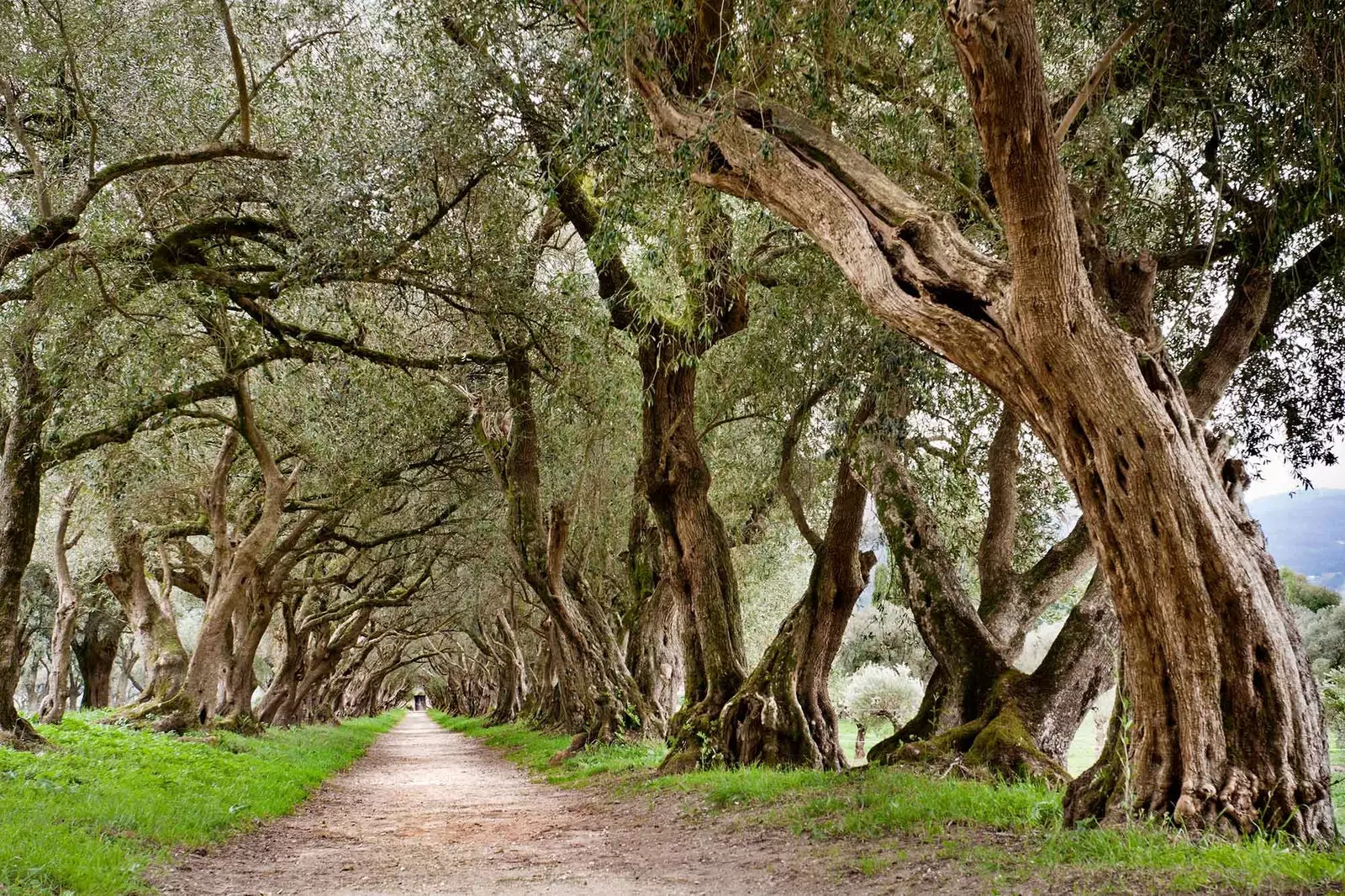
Olive tree walk in the Pazo de Santa Cruz de Rivadulla
Big House of Rosende **(Lugo) **
is in full Ribeira Sacra -the empire of white wine-, in the municipality of Sober -which is very cool, not only because of its rock group name- and is an example like few others of how the Phoenix rises from its ashes.
A fire destroyed it in 2005 , and its restoration was so meticulous that it maintains the granite walls and the floor made of wooden planks that may be over a hundred years old.
It is called the House of the Ladies because the last two inhabitants of the lineage that owns the pazo, the Diaz Varelas , were two sisters who lived in the middle of the last century.
Of its inhabitants, the best known is the great Elena Quiroga , a writer like few others, who became the second woman to enter the Royal Spanish Academy.
Currently she is a spectacular hotel, organize routes through the local wineries and it is one step away from the Sil canyons, an exceptional place.
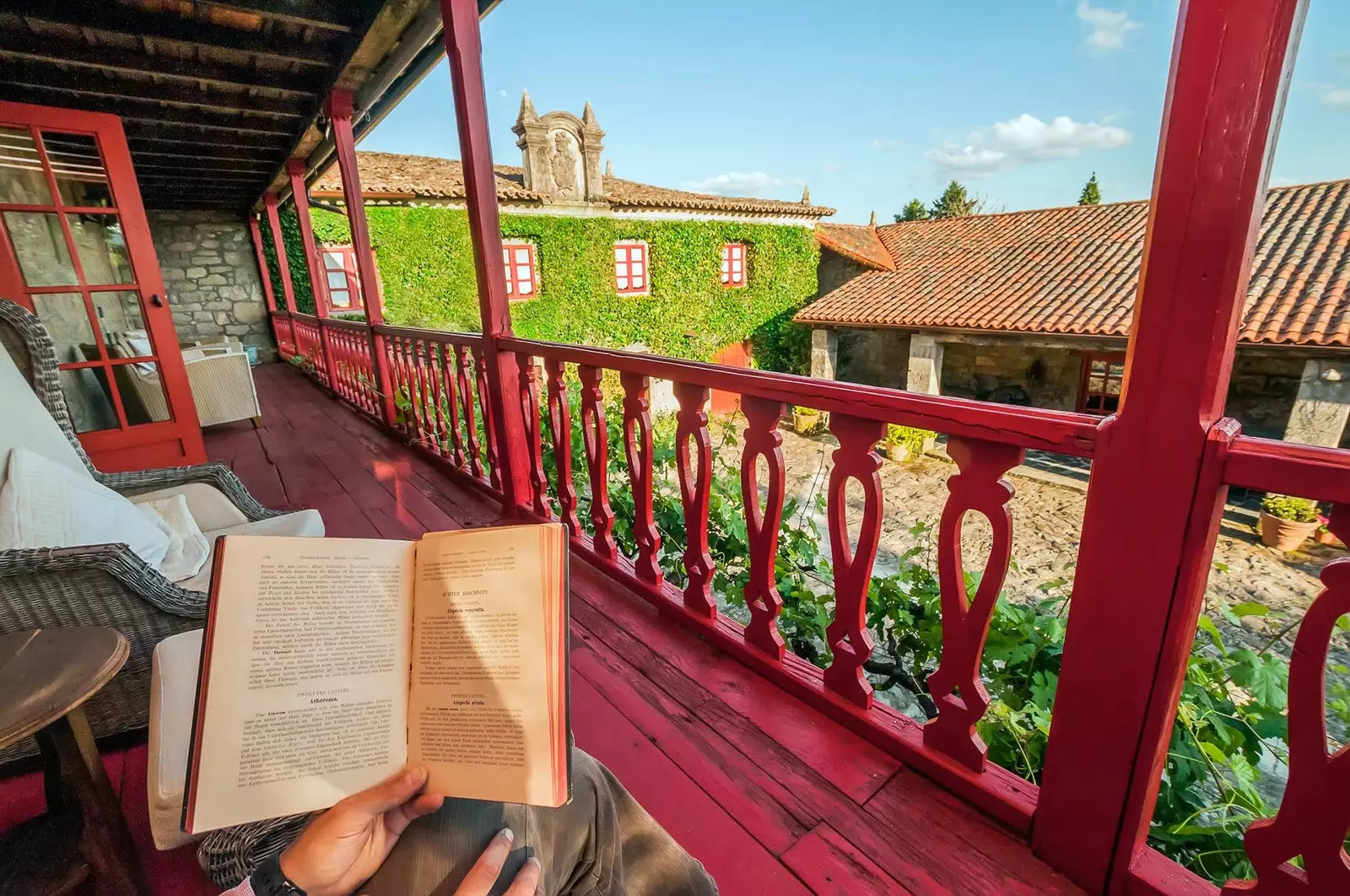
Big House of Rosende
Pazo A Freiria ( ** Ourense ** **) **
The name comes from the freires, military friars of the 12th century of the order of Saint John of Jerusalem, who would do a mass for you as well as warm your face with toñas.
It's in Poor of Trives , a town that is in the middle of nowhere while you go to meet him and once there, surrounded by intense green and mountains that cover the horizon seems to be the center of the known universe.
Today it is a hotel, It is very close to the aforementioned Sil canyons as well as Las Médulas , which according to legend, were the last resistance of the Celtic tribes against the Roman legions.
Pazo da Almuzara **(Ourense) **
This pazo is another one of those stories of wealth brought from the new world. Specifically of Argentina , where Perfectino Viéitez became a millionaire and well known. So much so that even King Alfonso XIII and he were friends, and he made him a knight.
It's in O Carballino , and as you know, here the octopus is religion. Now restored, it is a hotel that still retains a 19th century bathtub , the old stables and the gardens in an estate of 10,000 square meters. It even has a swimming pool.
Pazo de Bentraces **(Ourense) **
what started out as an episcopal residence of the Celanova Monastery, today it is a hotel that looks more like a mansion.
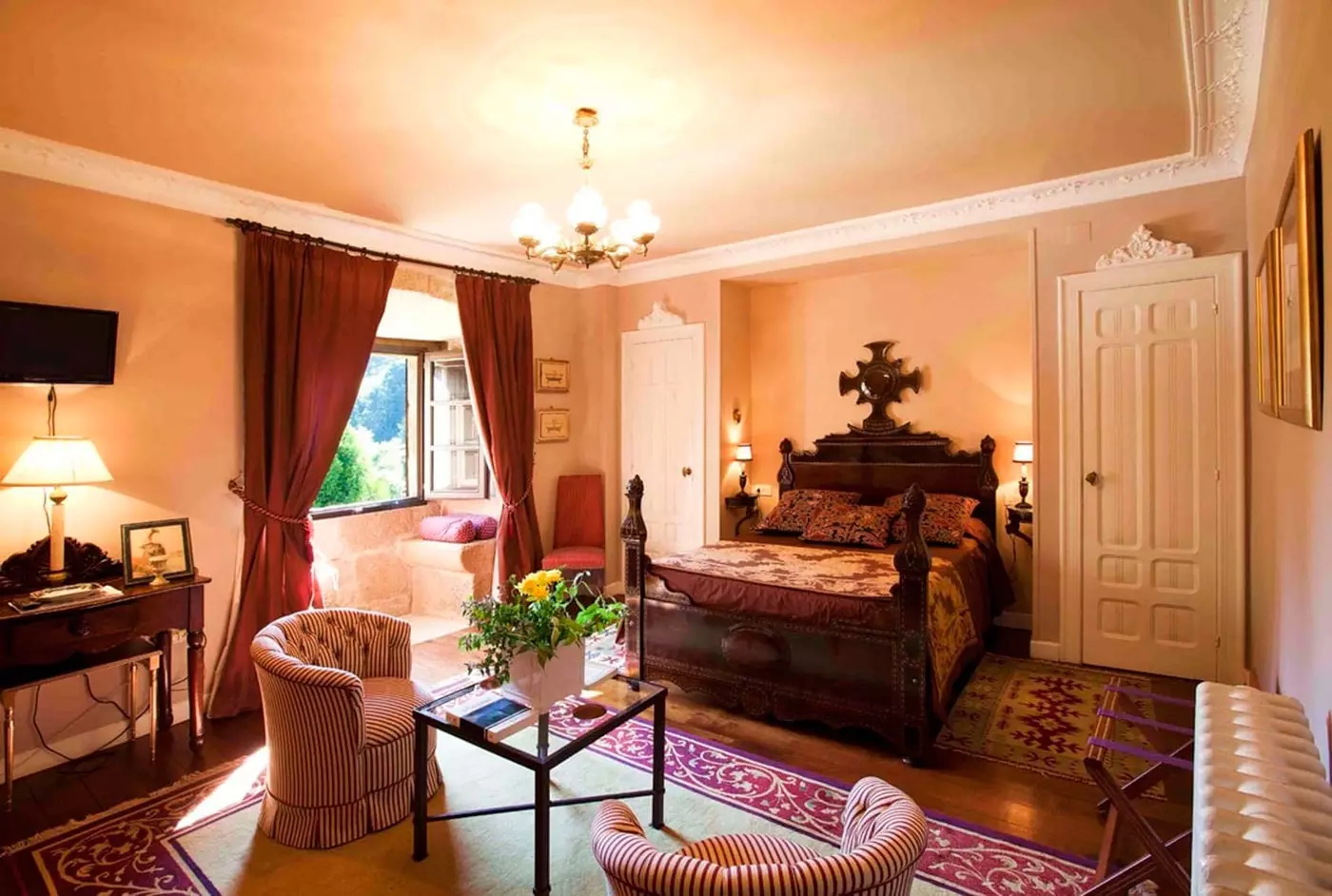
Room of the Pazo de Bentraces
It is about eight kilometers from Ourense , and there are 20,000 square meters with an outdoor pool, forest of oaks, magnolias, boxwoods and cypresses . They even have pergolas. Inside, delight yourself with the granite fireplace and the lareira (fire).
Pazo da Touza (Pontevedra)
One of the classics of the Galician architectural heritage -declared Historical Heritage and Asset of Cultural Interest-, This country house is from the 16th century and preserves even the battlemented tower. It's in Nigran , a stone's throw from Bayonne , and about 20 kilometers from ** Vigo **.
Perfect for a weekend of pleasure, as today is a spectacular hotel. Losing yourself in the 20,000 square meters of the estate means leaving your mobile phone in your room to find yourself.
Pazo La Buzaca **(Pontevedra) **
In total, 40,000 square meters of gardens, orchards, with two immense hórreos and a large house In all rules. It's in brunette And it's from the 16th century.
It has been inhabited by artists and today it is an incredible hotel, ideal to go back to another time: ancient trees, an English clock from four centuries ago or a sofa from three years ago. They can also organize a visit to local wineries.
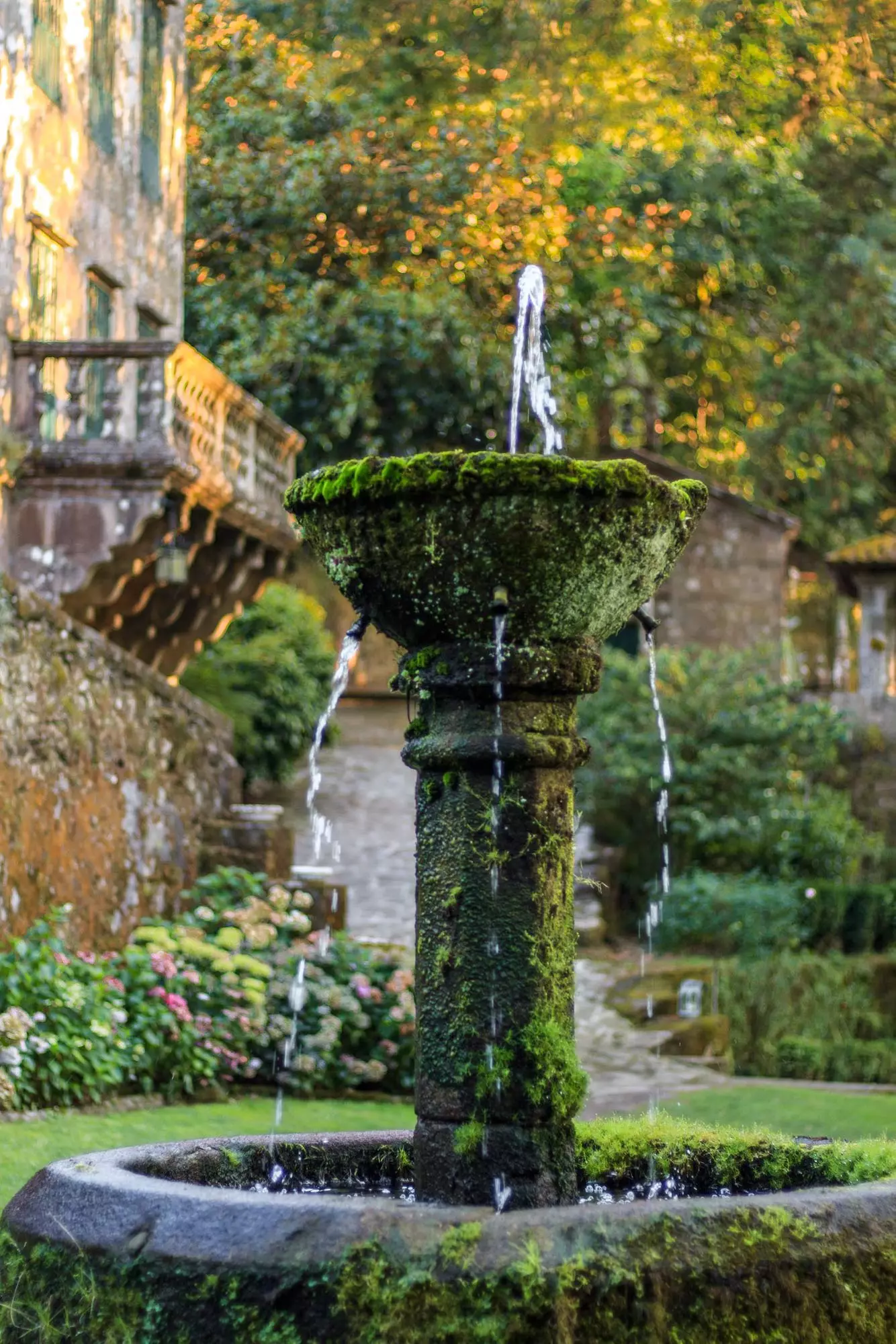
The garden of the Pazo do Faramello is pure fantasy
Pazo Torres Agrelo (Pontevedra)
It is in the middle of the **Portuguese Camino de Santiago** and from here you can see San Simon Island and Rande Bay: the first known for being a concentration camp and prison during the Civil War and the second for being the scene of a naval battle of epic proportions that faced almost 200 ships in which Dutch, English, French and Spanish were crowded.
It was so brutal that many of the secrets they kept ended up at the bottom of the sea, giving rise to legends and stories of incredible treasures that reached the ear of the very Jules Verne, who used the Vigo estuary as a source of inspiration for his legendary work Twenty thousand leagues under the sea.
As a home for personalities, The great painter Joaquín Sorolla came to live , although it served as a military reception center, a refuge during the war and as a hospital for the German army during World War II They say that there are still passageways and secret entrances from that time.
Pazo do Faramello (A Coruna)
This country house is of Genoese origin and they say that in the 19th century there was a competition to see which country house brought the strangest things. Plum trees, hydrangeas, camellias, maples and azaleas were brought here. all of ** Japan .**
It's like a dream garden , as if taken from a fantastic tale that reminds us of another time when we dreamed awake -because the wallet was always full-.
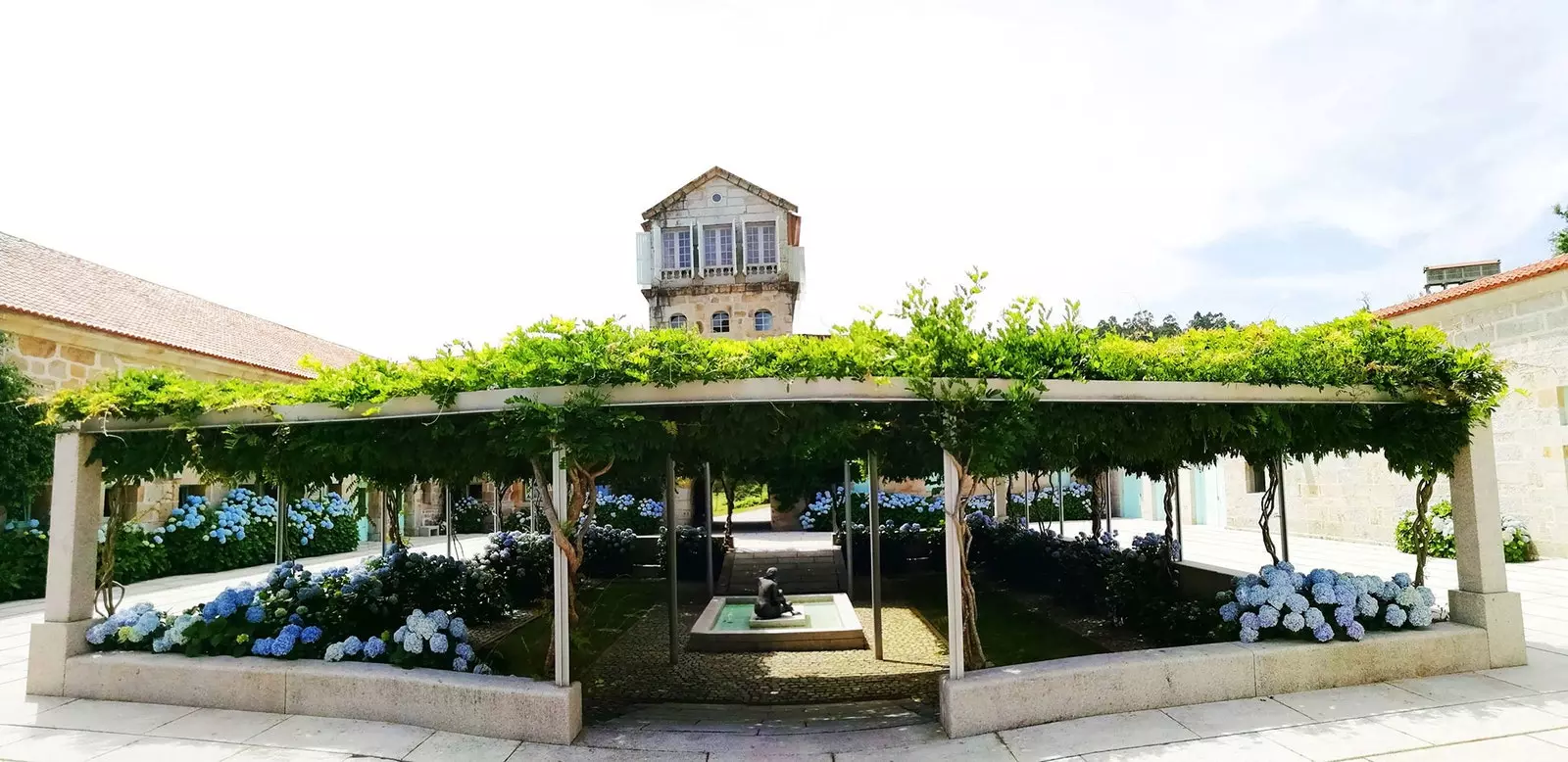
Pazo Baion
Pazo Baion **(Pontevedra) **
From the fifteenth century, it is known as the pazo that comes out in farina . It was the home of countless noble families. In the time of the Indians, those who went to make the Americas and came back fully loaded, one of those millionaires, Adolfo Fojo took him over and came to make his own wine.
His heirs sold him to a well-known drug trafficker in 1987 , which was the golden age of drug trafficking in the Rías Baixas. Once in the trena, it passed into the hands of the State.
He gave it up to Freixenet so that his vineyards would not fall into oblivion, and in 2008 it was bought at auction by a cooperative of 300 local farmers who are dedicated to making albariño as they know.
Pazo Sineiro
Of undetermined origin -perhaps from the 17th century- it was built due to the looting and burning of another country house, that of Pías by the Portuguese army in 1665. It's in Or Grove So you have no excuse seafood, beaches and even the spa of A Toxa -, and there are more than 3,000 square meters of enjoyment.
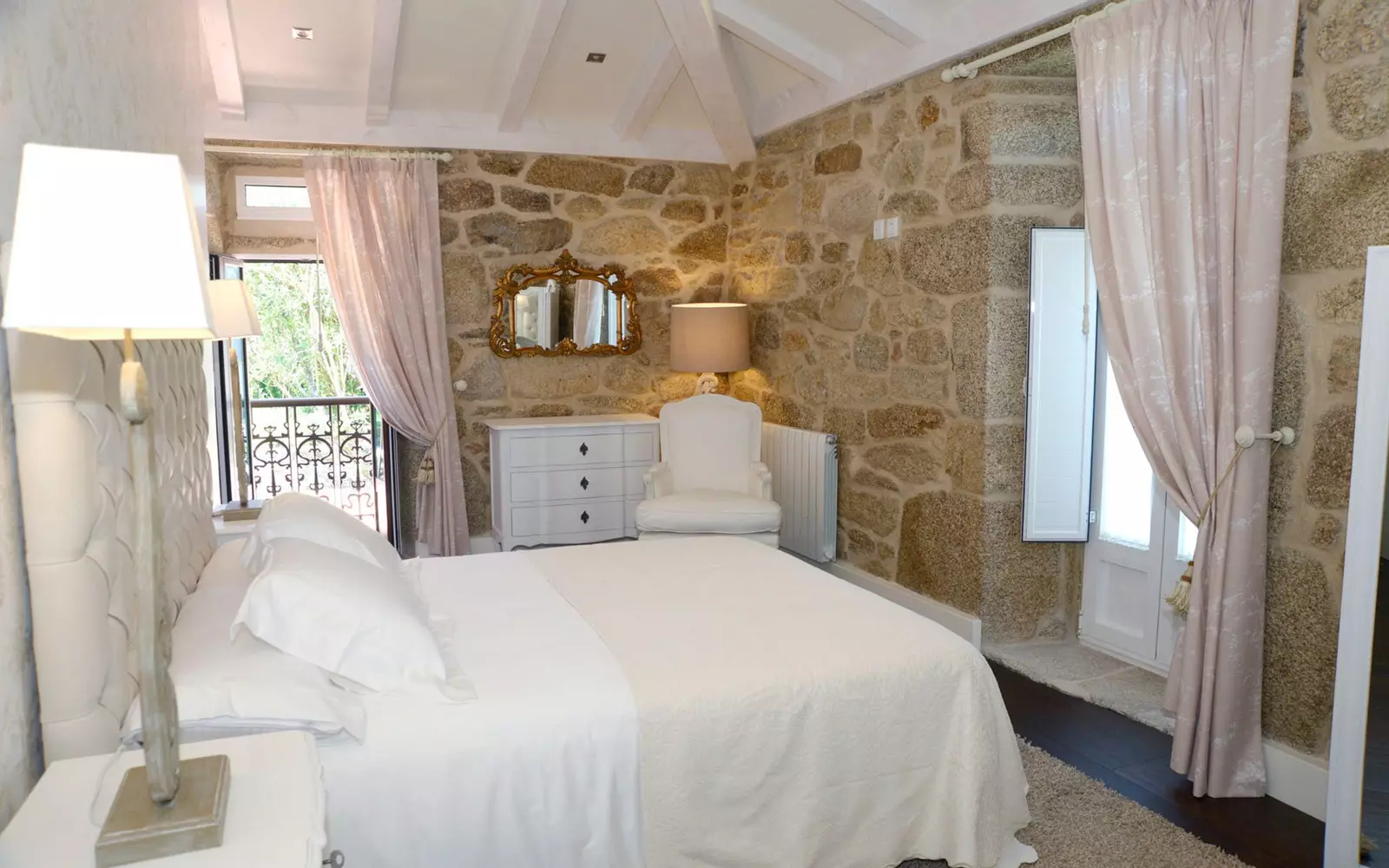
Room in the Pazo Sineiro
**Pazo de Oca (Pontevedra) **
The Galician Versalles they call it. It is so spectacular that even Almodóvar fell exhausted. comes out in The Skin I Live In , as if they were the labyrinthine gardens of Alice in Wonderland.
It is in the parish of Oca -very close to To Estrada , remember **Argentinos Burguer and its pulled pork or the wonderful pastrami** - and its pond and gardens are the envy of half of Western Europe.
Chestnut, walnut, oak and birch ; camellias -a long row of the incredible Mont Blanc camellia crosses almost the entire western part of the garden-, hydrangeas, rhododendrons, palms and azaleas they complete the package of perfection.
It's in Vilagarcia de Aurosa (Pontevedra) and, although it is inhabited, visits are allowed, but reservations must be made.
Pazo de Rubianes **(Pontevedra) **
Another one belonging to the so-called “camellia route” , since he has to his credit some 800 cataloged species , which is said soon, in its approximately 16 hectares of garden, so it is impossible to describe it. It is immeasurable and incredible in equal parts.
As the camellias bloom between November and April depending on the species, the garden gradually transforms as the months go by, leaving a landscape full of flowers. It began to be built in 1411, and it has a French style, like a petit château.
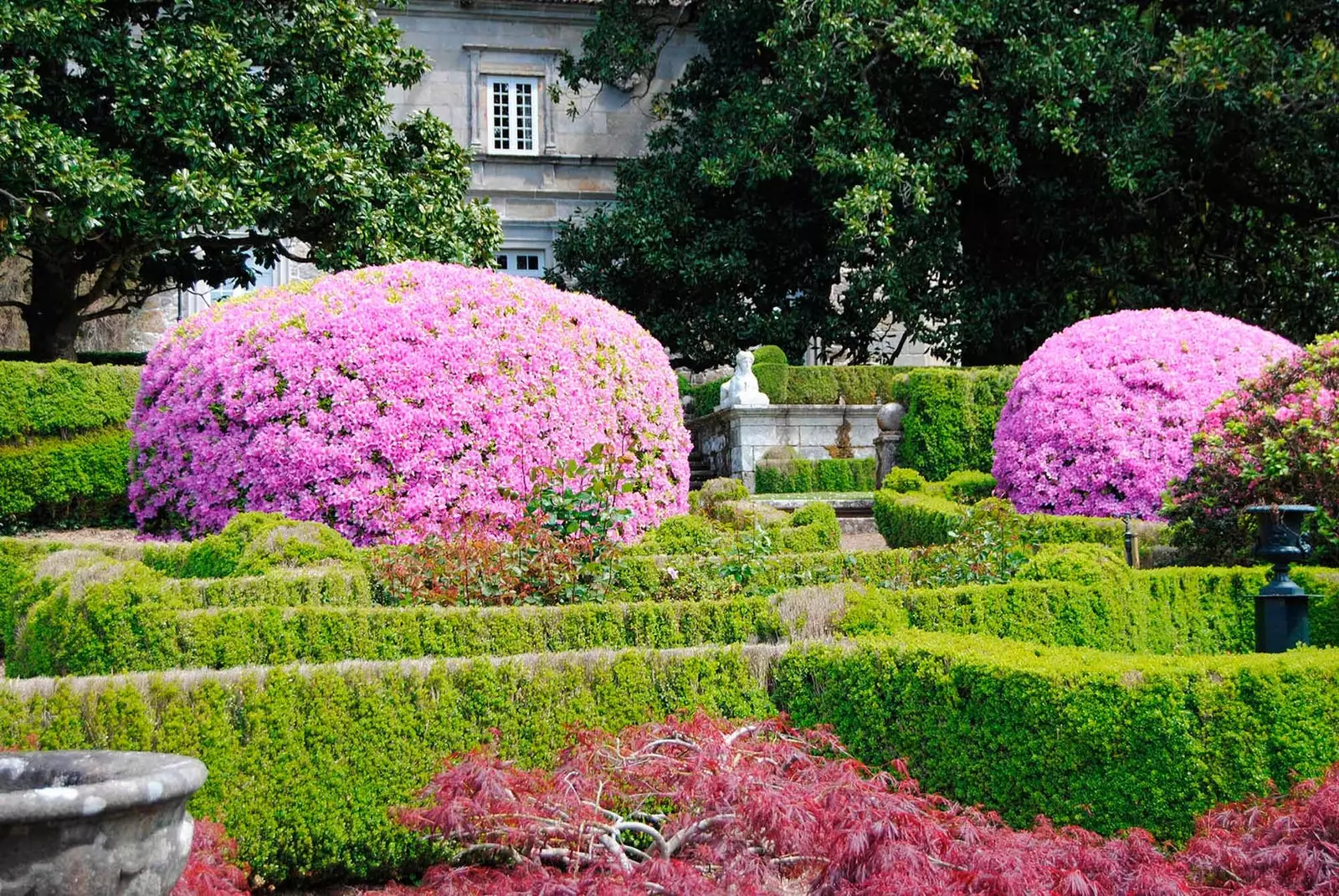
Garden of the Pazo de Rubianes
